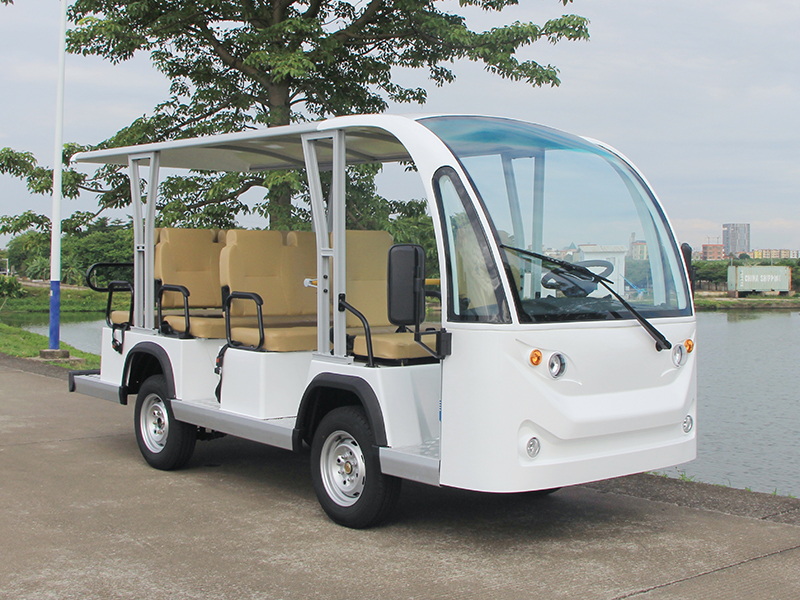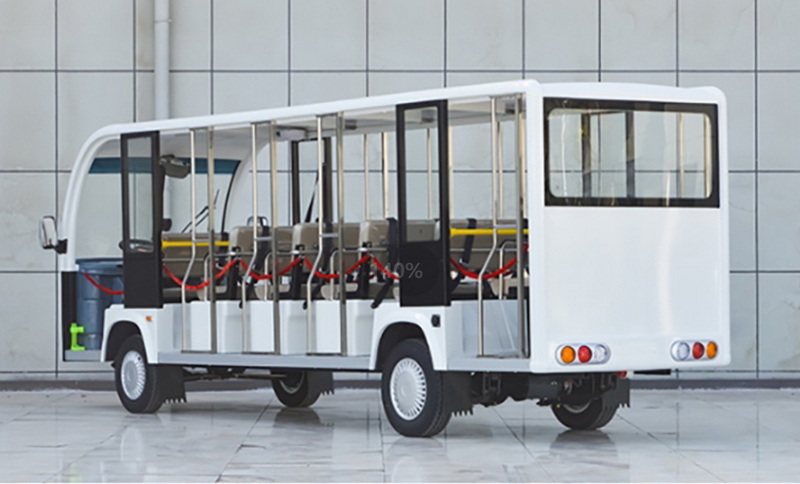Content Menu
● Global Landscape of Electric Sightseeing Car Manufacturers
>> Major Manufacturing Hubs
● Why China Is the Leading Country for Electric Sightseeing Car Manufacturers
>> Extensive and Mature Manufacturing Ecosystem
>> Commitment to Quality and Certification
>> Cost-Effectiveness and Customization
● Key Features of Top Electric Sightseeing Cars
● Market Trends Shaping the Electric Sightseeing Car Industry
● Notable Electric Sightseeing Car Manufacturers by Country
● Technological Innovations Driving the Market
>> Battery Improvements
>> Smart Fleet Management
>> Lightweight Materials and Design
● Regional Market Insights
>> Asia-Pacific
>> Europe
>> North America
● Challenges Facing the Electric Sightseeing Car Market
● Conclusion
● FAQ
>> 1. What factors make China the leading country for electric sightseeing car manufacturers?
>> 2. How long can electric sightseeing cars typically operate on a single charge?
>> 3. Are electric sightseeing cars customizable?
>> 4. What are the main challenges facing the electric sightseeing car market?
>> 5. What technological trends are shaping the future of electric sightseeing cars?
Electric sightseeing cars have become indispensable in modern tourism, offering an eco-friendly, quiet, and efficient mode of transport for exploring cities, parks, resorts, and tourist attractions. As the global push for sustainable mobility intensifies, the electric sightseeing car industry is rapidly evolving, with manufacturers competing to deliver innovative, reliable, and cost-effective vehicles. This article examines which country currently leads in producing the best electric sightseeing cars, highlighting key manufacturers, technological trends, and market dynamics.

Global Landscape of Electric Sightseeing Car Manufacturers
Electric sightseeing cars are specialized electric vehicles designed primarily for short-distance passenger transportation in tourist areas. They emphasize passenger comfort, safety, environmental sustainability, and operational efficiency. These vehicles range from compact 2-5 seaters to larger models accommodating more than 10 passengers, serving applications such as city tours, resorts, campuses, shopping centers, and parks.
Major Manufacturing Hubs
- China: Undisputed leader in electric sightseeing car manufacturing, China boasts a vast network of manufacturers producing a diverse range of models. Its manufacturers are recognized for combining affordability, quality, and customization options, supported by international certifications such as ISO9001, ISO14001, and ISO45001. Chinese companies dominate global exports and supply chains for these vehicles.
- United States: While the U.S. has a strong electric vehicle industry overall, its presence in the sightseeing car niche is more specialized. American companies focus on premium or utility electric vehicles, with some producing electric shuttles designed for tourism and commercial use.
- Europe: European manufacturers, particularly in Germany and France, emphasize high-quality engineering, safety, and design sophistication. However, their market share in electric sightseeing cars is smaller compared to China, focusing more on niche or luxury segments.
Why China Is the Leading Country for Electric Sightseeing Car Manufacturers
Extensive and Mature Manufacturing Ecosystem
China benefits from a well-established supply chain and manufacturing infrastructure that enables mass production of electric sightseeing cars at competitive prices. Companies such as Guangdong Lvtong New Energy Electric Vehicle Technology Co., Ltd. and Qingdao Yingpo Automobile Sales Co., Ltd. offer a wide variety of models, from compact golf-cart-like vehicles to 11-seat electric sightseeing buses.
Commitment to Quality and Certification
Chinese manufacturers have increasingly adopted international quality and environmental standards, holding certifications like ISO45001:2018 (occupational health and safety) and ISO14001 (environmental management). This commitment enhances their global competitiveness and reassures buyers about product reliability and sustainability.
Cost-Effectiveness and Customization
Chinese electric sightseeing cars are often priced between US$3,500 and US$10,000 depending on size and features, making them accessible for bulk purchases by resorts, parks, and city tour operators. Their ability to customize seating arrangements, colors, and additional features allows operators to tailor vehicles to specific needs.
Key Features of Top Electric Sightseeing Cars
- Battery Technology and Range: Most sightseeing cars utilize lithium-ion batteries providing ranges between 50 to 100 miles per charge, sufficient for daily tourist routes without frequent recharging.
- Seating Capacity: Models vary widely, from small 2-5 seaters ideal for intimate tours to larger 11-seat models designed for group transportation.
- Safety and Comfort: Features such as seat belts, weather protection (roofs, side curtains), ergonomic seats, and smooth suspension systems ensure passenger comfort and safety.
- Charging Efficiency: Fast charging technologies are becoming more common, with some vehicles able to charge from 10% to 80% in under an hour, minimizing downtime.
- Environmental Impact: Zero tailpipe emissions and low noise levels make these vehicles ideal for environmentally sensitive areas and cities aiming to reduce pollution.

Market Trends Shaping the Electric Sightseeing Car Industry
The electric sightseeing car market is poised for significant growth, driven by several global trends:
- Sustainability and Environmental Regulations: Increasingly stringent emission standards worldwide are accelerating the shift from internal combustion engine vehicles to electric alternatives in tourism and urban mobility.
- Technological Advancements: Innovations in battery chemistry, charging infrastructure, and vehicle connectivity (IoT, AI-driven fleet management) are enhancing vehicle performance, reliability, and operational efficiency.
- Rising Urbanization and Tourism Demand: Growing urban populations and expanding tourism sectors in Asia, the Middle East, and other regions are fueling demand for sustainable, efficient sightseeing vehicles.
- Digitalization and Customization: Manufacturers are integrating smart technologies for predictive maintenance, route optimization, and passenger experience enhancement, while offering tailored vehicle designs to meet diverse market needs.
- Market Expansion in Developing Regions: Asia-Pacific and Middle Eastern markets are attracting significant investments, reflecting rising disposable incomes and government incentives promoting electric mobility.
Notable Electric Sightseeing Car Manufacturers by Country
| Country | Manufacturer | Highlights |
| China | Guangdong Lvtong New Energy Electric Vehicle Technology Co., Ltd. | Broad product range, ISO certified, competitive pricing |
| China | Qingdao Yingpo Automobile Sales Co., Ltd. | Specializes in 11-seat electric sightseeing cars, cost-effective |
| USA | Polaris | Focus on electric utility and sightseeing vehicles with advanced tech |
| France | Goupil | Premium electric utility and sightseeing vehicles with strong European standards |
Technological Innovations Driving the Market
Battery Improvements
Battery technology remains the cornerstone of electric sightseeing car advancement. The industry is witnessing rapid progress in lithium-ion and emerging solid-state batteries, offering longer ranges, faster charging, and enhanced safety. These improvements address previous limitations such as range anxiety and long charging times, making electric sightseeing cars more practical and appealing.
Smart Fleet Management
Integration of IoT and AI enables operators to monitor vehicle health, optimize routes, and schedule maintenance proactively. This reduces operational costs and improves passenger service quality.
Lightweight Materials and Design
Manufacturers are employing lightweight composites and aluminum alloys to reduce vehicle weight, thereby improving efficiency and extending battery range without sacrificing durability.
Regional Market Insights
Asia-Pacific
Asia-Pacific, led by China, is the largest market for electric sightseeing cars. Rapid urbanization, government incentives, and growing tourism infrastructure investments are key growth drivers. The region also benefits from a robust manufacturing base and expanding charging infrastructure.
Europe
Europe is experiencing steady growth, supported by stringent environmental regulations and increasing adoption of electric vehicles in urban centers. Countries like Germany and France focus on quality, safety, and luxury segments, with manufacturers innovating in design and technology.
North America
The U.S. market is growing with a focus on premium electric shuttles and utility vehicles for resorts and campuses. Government incentives and rising environmental awareness are encouraging adoption, though the sightseeing car segment is less dominant compared to China.
Challenges Facing the Electric Sightseeing Car Market
- Regulatory Compliance: Navigating varying emission and safety standards across countries can be complex and costly for manufacturers.
- Battery Cost and Supply Chain: Fluctuations in raw material prices and supply chain disruptions may impact production costs and vehicle pricing.
- Infrastructure Limitations: Insufficient charging infrastructure in some regions can hinder adoption, especially in remote tourist destinations.
- Competition from Alternative Technologies: Hydrogen fuel cells and hybrid vehicles present alternative sustainable transport options that could compete with electric sightseeing cars.
Conclusion
China currently leads the global electric sightseeing car manufacturing industry, thanks to its extensive production capabilities, competitive pricing, and adherence to international quality and environmental standards. Its manufacturers offer a wide variety of models that meet diverse market needs, from small golf-cart-style vehicles to larger 11-seat electric buses. Although other countries like the United States and European nations contribute with innovative designs and luxury options, China's dominance in volume, cost-effectiveness, and customization makes it the best source for electric sightseeing cars worldwide.
Looking ahead, the electric sightseeing car market is set for robust growth, driven by sustainability mandates, technological advancements, and rising tourism demand. Manufacturers that embrace innovation, smart technologies, and global market trends will be well-positioned to lead this dynamic industry.

FAQ
1. What factors make China the leading country for electric sightseeing car manufacturers?
China's leadership is due to its mature manufacturing ecosystem, cost-effective production, wide product range, and compliance with international certifications such as ISO9001 and ISO14001, enabling it to meet global quality and environmental standards.
2. How long can electric sightseeing cars typically operate on a single charge?
Most electric sightseeing cars offer a range between 50 to 100 miles per charge, which is sufficient for daily tourist routes and short-distance transportation needs.
3. Are electric sightseeing cars customizable?
Yes, especially Chinese manufacturers provide extensive customization options including seating capacity, vehicle color, additional features, and accessories to suit specific operational requirements.
4. What are the main challenges facing the electric sightseeing car market?
Key challenges include regulatory compliance across different regions, battery cost and supply chain issues, limited charging infrastructure in some areas, and competition from alternative green technologies like hydrogen fuel cells.
5. What technological trends are shaping the future of electric sightseeing cars?
Advancements in battery technology (including solid-state batteries), smart fleet management using IoT and AI, lightweight vehicle materials, and faster charging capabilities are the main trends driving improved performance and adoption.










































